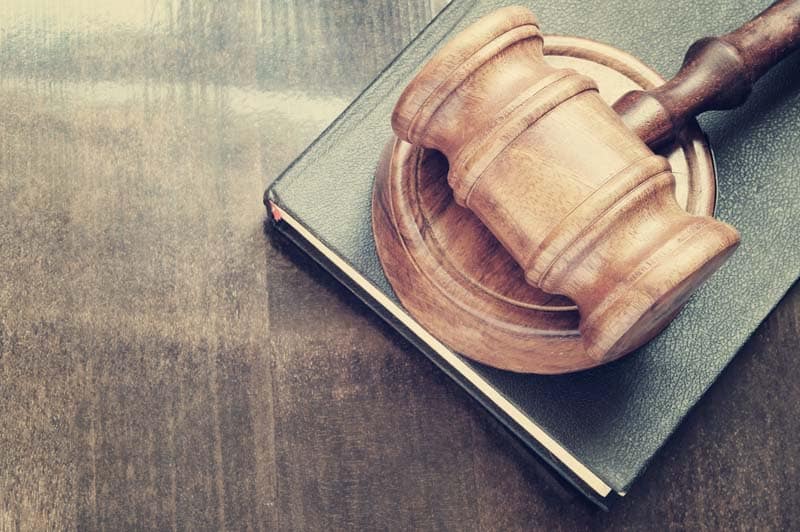In this guide, we discuss in detail and with numerous legal references the use of survey methodology in trademark disputes. Contact our polling agency for assistance.

Law agencies can use surveys in proceedings to defend their clients’ trademarks. We have conducted several cases of this type, helping brands and their counsel to defend themselves. In this article, we explain the key points to bear in mind. Based on case law, we also show you the limits of normal market research agencies and the precautions that need to be taken. Don’t jeopardize your chances. Call on a serious agency like IntoTheMinds!
Contact the IntoTheMinds market research agency for a quote
If you only have 30 seconds
Brand conflicts often arise when:
- One company accuses another of using a name, logo, or slogan like its own, creating a risk of confusion.
- A new brand seeks to register, but its acceptance is contested on grounds of anteriority or similarity.
- A registered trademark seeks to prove that it has acquired significant notoriety among the public (“reputed trademark”).
- In these situations, surveys become a probative method before the courts. However, extreme care must be taken with methodological aspects to ensure that a court of law can accept conclusions. As a survey agency, IntoTheMinds guarantees its clients the highest level of rigor and the most reliable methodologies.
Brand protection is essential for companies seeking to preserve their identity, reputation, and market share. In this context, surveys play a strategic role in providing concrete, quantitative evidence in the event of disputes or registration applications. How are these tools used, and why are they so important?
Surveys as Evidence in Court
Surveys are often used as evidence in legal proceedings concerning trademark recognition. Here are a few examples.
1. Demonstrating a likelihood of confusion
One of the main roles of surveys is to assess whether the target audience perceives confusion between two brands. In other words, a company seeks to demonstrate the distinctiveness of its trademark or sign. On the other hand, the defendant wants to demonstrate the absence of distinctiveness.
In this context, survey questions aim to:
- Identify whether consumers believe that two products or services come from the same company, as in the following cases:
- Rent A Car v. “Enterprise rent-a-car ‘concerning confusion over the’ rent a car” trademark
- August Storck v. INPI
- Measure the extent to which the visual, textual, or sound elements of the brands in question influence this perception.
In this context, the case of Somfy vs. A-OK is an interesting one since the Paris judicial court, which ruled on the case on 05/07/2024, disagreed with the method employed by the polling agency. The Court noted that an error had been made in the wording of the confusion question. This case proves that it is essential to call on an agency that has expertise in this type of issue and leaves nothing to chance in the survey design. In another ruling (Bordeaux Court of Appeal, March 23, 2016) on confusion between 2 trademarks, the Court disavowed sampling. It stated, “The survey produced by the company […] cannot be retained as demonstrative of the absence of possible confusion between the two signs when conducted among a sample not necessarily representative of the national reference public”.
Contact the IntoTheMinds polling agency
3. Proving reputation
For a registered trademark, demonstrating that it is known by a significant percentage of the population is often essential to obtain extended protection. Notoriety market research enables us to gather data such as:
- The rate of spontaneous or assisted recognition.
- Positive or negative brand associations.
This type of market research is frequently used in legal proceedings.
The action judged by the Court of Justice of the European Union on June 19, 2014 (Oberbank AG v. Deutscher Sparkasse) is interesting because it establishes a level for attesting awareness through use. In its judgment, the Court says: “An opinion poll on a claimed abstract color mark [must] result in a degree of recognition of at least 70% for it to be considered that the mark has acquired distinctive character through use”.
The legal action brought by the Marie trademark, judged by the INPI on June 14, 2022, also shows that a notoriety measurement must be carried out in a precise context or risk being dismissed. In this case, the Marie brand, active in the agri-food sector, requested the nullity of the Marie and Johana trademark registration. In the end, invalidity was declared only for certain types of products. The survey did not demonstrate awareness of the entire range of products for which the registration had been made.
Measure Brand Awareness with the IntoTheMinds Market Research Agency
3. Measuring the impact of similarities
In the case of disputes, a survey can also help assess the impact a competing brand may have on consumer perception or choice. This is known as free-riding. This includes the following:
- Loss of potential market share.
- Loss of revenue
- Dilution of brand image.
Parasitism is a broad topic. We dealt with this case in our article on PicRights about the Paris judicial court ruling of June 27, 2024, which condemned the DK Ambassador company for parasitism.
Legal survey methodology
It is crucial to follow a rigorous methodology to ensure that survey results are admissible before a court or regulatory authority. Based on case law and our expertise as a polling agency, we see 4 main areas of work.
It is crucial to follow a rigorous methodology to ensure that survey results are admissible before a court or regulatory authority. Based on case law and our expertise as a polling agency, we see 4 main areas of work.
1. Representative sampling
The sample surveyed must reflect the relevant target population, i.e., the products or services’ potential consumers. This includes criteria such as:
- age
- Geographical location
- Consumer habits
- Language or fluency in a foreign language when required by the brand name (foreign terms)
In terms of sample size, everything depends on the target population. Case law generally relies on samples of at least 500 people. When a representative sample of a country’s population is required, judgments generally refer to samples of N=1000 people.
2. Des questions précises et réfléchies
Questions must be formulated impartially to avoid bias (we refer you to this article, which describes the rules to follow when drafting questionnaires).
In judicial matters, here are a few essential recommendations for drafting a questionnaire:
- Avoid implicit suggestions (“Do you think this product is similar to brand X?”).
- Prefer closed questions.
- Use validated measurement scales.
Finally, here’s an interesting case in point. The French Pharmacists’ Association (Ordre des Pharmaciens) is an interesting case, as the agency’s National Intellectual Property Institute (INPI) found that the survey’s findings were implacable. Apart from the high awareness levels above the 70% threshold cited by the Court of Justice of the European Union, the method used is worth reproducing to demonstrate the notoriety of a sign. In this case, the polling agency tested the association of the Green Cross with the pharmacists’ association in 2 ways:
- by producing a photo of the sign (a green cross on a white background): 79% of respondents recognized the sign
- by providing a text-only description (“What does a green cross mean to you?”): 66% of respondents associated the green cross with pharmacists and pharmaceutical products.
3. Rigorous statistical analysis
Results must be interpreted with precision, presenting margins of error, response rates, and response distributions. In all the surveys we have conducted for legal purposes, we have conducted a file detailing the methodology, the results obtained in synthetic form, and all the detailed results.
4. Method of administration
The CAWI method is widely used and recognized as valid by the courts. In a ruling dated 31/03/2017, the Paris Tribunal de grande instance stated, “The methodology [CAWI] is not open to criticism. Internet polls are now regularly employed, as this medium can reach a significant proportion of the French population.”
Don’t gamble your chances of success.Call IntoTheMinds Market Research Agency
The advantages and limitations of surveys within a legal framework
Avantages
- Objectivity: Surveys provide quantitative data that is difficult to dispute.
- Adaptability: They can be designed to answer specific litigation-related questions.
- Credibility: When conducted by recognized agencies, they reinforce the probative value of arguments.
- Acceptability: Courts recognize online surveys (CAWI) as a probative method.
Limitations
- Cost: Surveys can be expensive, particularly for large samples or in-depth qualitative market research.
- Acceptability: Courts may reject surveys if the methodology is inappropriate or flawed.
- Subjectivity of responses: Despite precautions, participants’ responses can be influenced by external factors. It is, therefore, essential to use the services of a reputable polling agency.
Conclusion
In trademark protection proceedings, surveys are a major asset for demonstrating public perception, likelihood of confusion, or brand awareness. Although their use requires rigorous preparation and financial investment, their probative value is undeniable when well-designed. For companies, integrating this approach into their legal strategy can mean the difference between success and failure in litigation.










